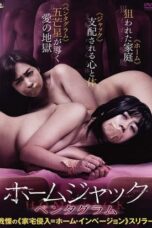Based on a true story, Fatih Akin‘s Competition Entry Der Goldene Handschuh (The Golden Glove) captures these collisions through the inherited trauma of a serial killer, Fritz Honka (Jonas Dessler) and the dark fissures of post-war German society, fraught with memories of growing up in the Third Reich. The memories of World War II, both first hand and inherited are subtly dissected and disemboweled in this gruesome social study.
Honka was a disfigured, deplorable, hunch back of Notre Dame figure, psychologically and physically scarred by the abuse and viciousness of his youth in the Russian concentration camps. He emerged from the bowels of post-war society, the lowest social strata and became villainous during his scandalous trial in 1976.
The film is a shadowy dive into the underbelly of the Capitalist Dream off Hamburg’s Reeperbahn, a heady medley of alcoholism, rape, misery and criminal activity. Set in Hamburg’s St. Pauli district, Akin tells the true story of serial killer Fritz Honka who lured his victims home from the bar Der Goldene Handschuh.
Honka’s persistent erectile dysfunction and escalating alcoholism fuel his sadism towards the “old bags” whom he solicits at the bar, cementing the film with a Fassbinder inspired morally bankrupt center.
The film’s screenplay is based on the novel of the same name by Heinz Strunk, and it opens in 1970 on the scene of his first murder. Honka has a pronounced squint and appears to have undergone a symbolic Kafkaesque metamorphosis into a venomous bug, who can no longer attract the opposite sex.
A nightmarish situation which is full of terror, horror, and angst. He crawls around his apartment, scheming of how to dispose of the body. Later, we are given traces for his violent outbursts, on being serenaded by Honka, a prostitute in Der Goldene Handschuh who seeing his face for the first time, remarks with disgust, “I would not piss on that, even if it was on fire.”
This incessant rejection becomes his Oedipal fuel, and in a spur of motivation, Honka decides to saw the dead woman in the attic into pieces and wrap up the portions of meat, which he walls up behind a wooden trap door in his apartment. The stink of decay is palpable throughout the film, and the squalor and filth of his living conditions are symbolic of Honker’s mental collapse. He blames the smell constantly on the ‘islanders’ or Greek immigrant family cooking downstairs.
Director of Photography Rainer Klausmann never fully escorts us into Honka’s sordid bedroom, we are spared the proximity of the gore, yet goaded in by the audible effects of each violent act. Thematically comparable to Lars Von Trier’s tension between chaos and control, Akin challenges the audience emotionally and psychologically depicting women undergoing extreme violence and duress. The misfortune and suffering of women in Von Trier’s films is not a source of sadistic pleasure for the filmmaker, (neither for Akin) rather, arguably, an exaggerated or heightened cinematic horror format which seeks to elevate this female misery as a result of controlling and violent men.
Despite the female suffering in this film, there is an undertone of male emasculation and defeat evident in all of the men presented in this film. We meet the retired military officer ‘SS Norbert’, with one functioning eyeball, a regular in the bar, who upon encountering a fresh-faced youth in the bathroom, decides to urinate on him, whilst instructing him to “look forward”. We meet the husband of a cleaner, who drinks all his money away and kisses Honker in a homoerotic, alcoholic haze.
These powerless men, in this dystopian world, are warped addicts who have not dealt with childhood trauma and have never learned to grieve. Akin focuses his camera on these depressive, frozen moments, offering “no past”, yet we feel that we are given an intimate glimpse into an underclass which we should view with the empathy that psychopathic Honker lacks and not merely with disgust.




